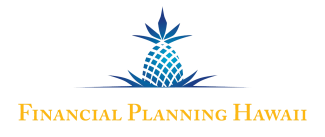
The Good, the Bad, and the Ugly of Investing in Savings Bonds
8.36% U.S. Gov Guaranteed for 12Months! What Could Possibly Go Wrong?
(The Good, the Bad, and the Ugly of Savings Bonds)
By John H. Robinson, May 2022
President Ronald Reagan once quipped that the 9 most terrifying words in the English language are, "I am from the government, and I am here to help." For all the media attention the current generational investment opportunity currently offered by Series I Savings Bonds has garnered, a visit to the Treasury Direct website (the sole venue from which U.S. savings bonds may be purchased), does little to dispel the late President's position on the ineptitude of big government.
The Good
To be clear, I have been as vocal as anyone in the financial planning profession in my efforts to raise awareness of the unique investment opportunity that I-bonds present. Investors who purchased Series I savings bonds between November 1, 2021 and April 30, 2022 will earn 7.12% for the first six months and 9.62% for the following six months for a 12-month annualized return of 8.36% backed by the full faith and credit of the U.S. Government. This is the highest rate of interest ever paid on I-bonds. By comparison, the highest yielding FDIC-insured bank deposit accounts currently check in at just north of 1%. What’s more, if you happen to own Series I bonds that were given to you or purchased by many years ago, these bonds have all been updated to pay these rates too! So, what’s not to love? Read on…
The Bad
While the Series I bond investment opportunity really is “legit,” there are a few structural inconveniences that may curb their appeal to some investors. First, Series I savings bonds must be held for 12 months. If you purchase and then find that you need the money sooner, hard luck. Second, the inflation-adjusted component of the interest rate adjustment is re-set every six months, so buyers today are “only” assured of earning 9.62% for 6 months. The following six months' interest will be determined based on the Urban Consumer Price Index (CPI-U) on November 1, 2022. Still, given that inflation seems to be on the rise and the inflation-adjusted interest rate on Series I bonds can never be negative, even with 6 months of rate uncertainty, the 12-month yield for consumers who purchase savings bonds today will be no less than 4.8%, and likely much higher. However, consumers should also be aware that they must pay a 3-month interest penalty based upon the current interest rate if they need or wish to cash in their Savings bonds within five years. For those who are not necessarily keen on the idea of tying up some of their cash reserves for as long as five years, the current “teaser rate” may not be enough to inspire buying. Investors should be aware that the 3-month interest penalty is the most recent three months of interest earned, so if you have some time flexibility, the ideal time to redeem early is three months after a low 6-month interest rate adjustment. Here is the specific guidance from the Treasury Direct website –
You can cash your Series I bonds any time after 12 months. You receive the original purchase price plus interest earnings. I bonds are meant to be longer-term investments; if you redeem an I bond within the first 5 years, you'll lose your last 3 months' interest. For example, if you redeem an I bond after 18 months, you'll receive the first 15 months of interest.
Perhaps the largest limitation of the Treasury Direct Savings Bonds program is that consumers are limited to purchasing $10,000 per person per calendar year. For some people, this limitation is too small to warrant the time, effort, and hassle required to set up, fund, and eventually liquidate an account with Treasury Direct. To the extent that two spouses can each buy $10,000 along with $10,000 for each kid, the $10,000 limit can be magnified a bit – but not entirely without incurrent additional hassle, which brings us to the truly ugly aspects of purchasing savings bonds…
The Ugly
When one first visits the TreasuryDirect.gov website, a common first impression is, “The 1990s called and they want their website back.” One client commented that when clicked on the website link from our Newsletter, he thought I had steered him to a fake site because the graphics are awful and the navigation interface is so primitive and poorly designed. The sketchy website workflow and aesthetics could be forgiven if they did not compromise the site’s functionality, but they do. Here are some of the problems that I and some of our clients have encountered –
- Failed Validation – Many consumers who enter the basic information required to open a Treasury Direct account, receive an email response informing them that the unnamed third-party company the Treasury uses to validate the information (hopefully not based in China) is unable to validate the information provided. The only remedy is to complete a paper application and mail it to the Treasury Dept. for review. The message cautions that it may take weeks to process. Several clients reported this experience. My wife and oldest son, Noah, got this message as well. I was able to overcome this ridiculous obstacle by purchasing for them as a gift in my own Treasury Direct account and then mailing in the paper forms.
- Overcontribution – When I first set up my Treasury Direct account, I intended to purchase Series I bonds for myself and my two minor children. In doing so, I accidentally purchased $30,000 in my own name instead of $10,000 for myself and $10,000 separately for each kid. Here is the message I received –
Dear John,
Your purchase exceeds the annual savings bond purchase
limitation. Please be advised the limit is $10,000 per series and TIN per
calendar year. A refund of the excess purchase will be made to the bank
account where the purchase originated. You should receive your refund
approximately 8 to 10 weeks from the date of purchase. You will be notified by email when the refund transaction is processed.
This is the part that conjured up President Reagan’s famous quip from the recesses of my memory. I checked my bank account a confirmed that the Treasury pulled $50,000 from my account, instead of the desired $30,000. However, when I log into the Treasury Direct website, the $20,000 overpayment is nowhere to be seen. If that refund deposit does not appear within “8-10 weeks,” I am more than a little bit worried about what I will need to do to get my $20,000 back! Here is what happens when one tries to contact Treasury Direct –
- Botched Ownership Registration – In most cases, I encourage clients to register all non-retirement accounts either in their revocable trust name or in single or joint name with a named beneficiary. While the Treasury Direct program permits all of this, the arcane navigation required to get this done coupled with frequent website glitches makes this process excessively cumbersome. Instead, most consumers (including the Robinsons) purchase savings bonds in individual name first and then go back to change the registration and/or update beneficiary designations. Take my word for it, it will not go smoothly.
- If you die, your savings bonds may not ever be redeemed or claimed by your heirs, even if you have named a beneficiary! There are hundreds of millions of dollars’ worth of unclaimed savings bonds that have past their 30-year maturity date. Since interest on the bonds is deferred until they are cashed, there are no 1099s that would alert heirs to the existence of the bonds. Further, since the Treasury effectively stopped issuing paper certificates more than a decade ago, it will be even harder for heirs to discover lost/forgotten savings bonds. Even if you have named a beneficiary, the Treasury does not have any means of knowing when the owner passed away nor any means of contacting the beneficiary. As a best practice, I recommend all FPH clients upload beneficiary forms and I-bond account documentation to their eMoney Vaults. For further reference, below are two links that may be useful tracking down lost/missing savings bonds.
Unclaimed Savings Bonds(National Association of Unclaimed Property Administrators)
Treasury Hunt (Treasury Direct's tool for finding lost/matured savings bonds)
I tried the Treasure Hunt site and – surprise - it did not work for me. I am sure you will have better success!
At the end of the day, Series I Savings bonds represent a unique investment opportunity. I still recommend them and if the next 6-month rate is similarly attractive, I plan to double up on the Robinson’s accounts. Just beware of the pitfalls and make sure that your purchases do not fall through the cracks in your estate plan.
John H. Robinson is the owner/founder of Financial Planning Hawaii, Fee-Only Planning Hawaii, and Paraplanning Hawaii. He is also a co-founder of fintech software-maker Nest Egg Guru.
DISCLOSURES
Securities offered through J.W. Cole Financial, Inc. (JWC) member FINRA/SIPC. Advisory services offered through Financial Planning Hawaii and J.W. Cole Advisors, Inc. (JWCA). Financial Planning Hawaii and JWC/JWCA are unaffiliated entities
Fee-only financial planning services are provided through Financial Planning Hawaii, Inc. DBA Fee-Only Planning Hawaii, a separate state of Hawaii Registered Investment Advisory firm. Financial Planning Hawaii does not take custody of client assets nor do its advisers take discretionary authority over client accounts.
The information contained herein is general in nature. Neither Financial Planning Hawaii nor J.W. Cole provides client-specific tax or legal advice. All readers should consult with their tax and/or legal advisors for such guidance in advance of making investment or financial planning decisions with tax or legal implications

